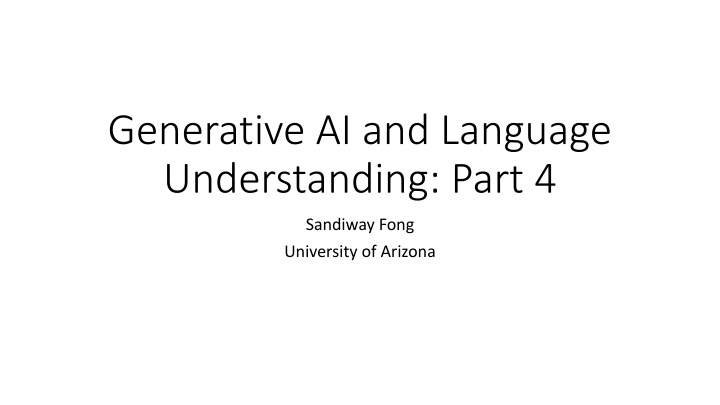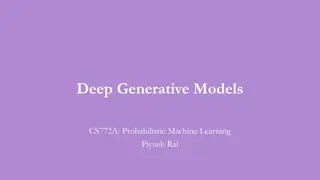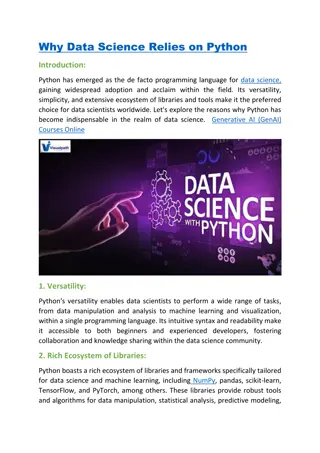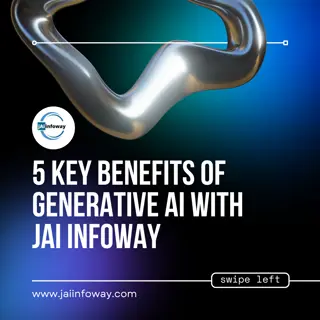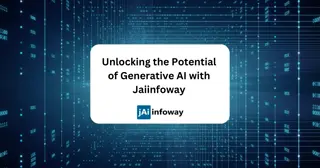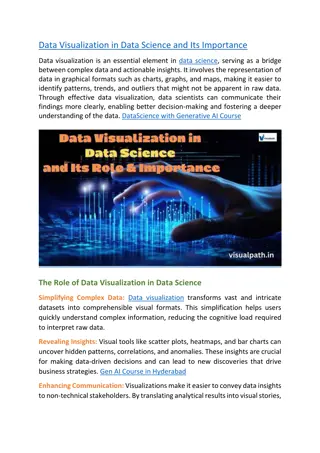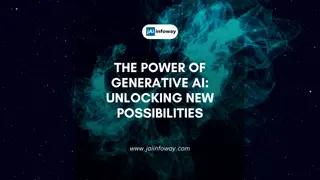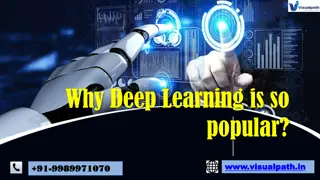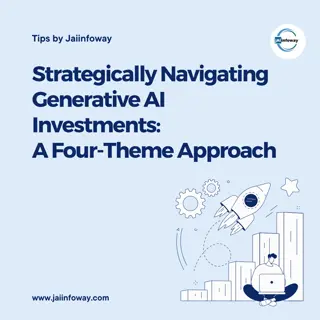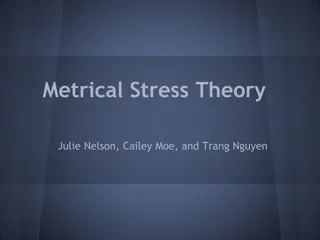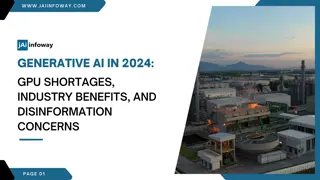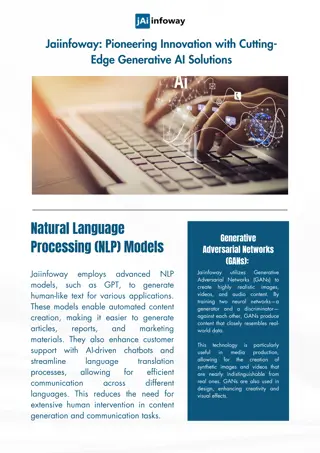Generative AI and Language Understanding
In this era of Generative AI, exploring the nuances of tough movement in language understanding. Analyzing the difference between "easy" and "eager" in sentences, highlighting syntactic structures and arguments. Testing ChatGPT and discussing DNN-based parsers. Examining CP structures and infinitives in English, shedding light on external arguments in context. Suspicious citations and discussions on prior context. (479 characters)
Download Presentation

Please find below an Image/Link to download the presentation.
The content on the website is provided AS IS for your information and personal use only. It may not be sold, licensed, or shared on other websites without obtaining consent from the author.If you encounter any issues during the download, it is possible that the publisher has removed the file from their server.
You are allowed to download the files provided on this website for personal or commercial use, subject to the condition that they are used lawfully. All files are the property of their respective owners.
The content on the website is provided AS IS for your information and personal use only. It may not be sold, licensed, or shared on other websites without obtaining consent from the author.
E N D
Presentation Transcript
Generative AI and Language Understanding: Part 4 Sandiway Fong University of Arizona
This is the era of Generative AI https://bard.google.com https://chat.openai.com/chat
Tough movement There's a difference between the following two sentences with respect to the interpretation of arguments: John is easy to please John is eager to please Do you see it? Hint: what are the arguments of the predicate please
Tough movement Let's test ChatGPT on this. https://chat.openai.com/chat We'll return to test DNN-based parsers later.
Google Bard win-win!
Tough movement A bit suspicious: why cite 1st sentence?
Tough movement No prior context.
Tough movement (Roberts 2019) p17: CP follows the head A (rather than preceding it, as in a head-final language); English has infinitives, and indeed infinitives of this type; arbitrary null pronouns can appear in this context with the properties that we observe them to have; the trace is a wh-trace (in many languages, including all the Romance languages, this construction features an A-dependency), etc. easy (different from eager) has no external argument, e.g. It is easy to please John, (*It is eager to please John)
Berkeley Neural Parser https://parser.kitaev.io
Google Natural Language Representation has a missing dependency some dependencies are not explicitly computed, e.g. xcomp Parse is wrong anyway: see why? subj_xcomp
